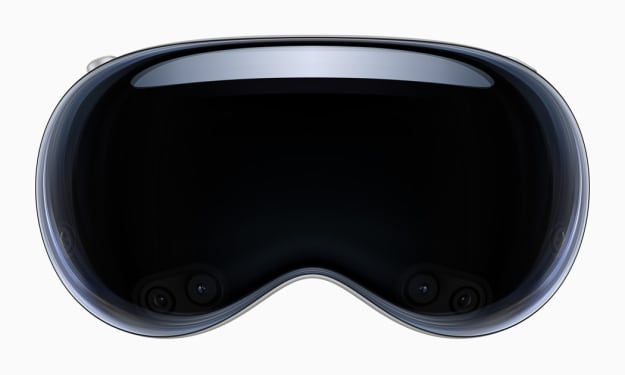Unveiling the Future
Exploring the Transformative Power of Augmented and Virtual Reality

In recent years, the world has witnessed a rapid advancement in the fields of augmented reality (AR) and virtual reality (VR) technologies. These immersive technologies have captured the imagination of both individuals and industries, offering new possibilities and transforming the way we interact with the digital world. As we look ahead to the future, it becomes clear that AR and VR will continue to evolve and shape various aspects of our lives. This article explores the potential of these technologies and discusses their impact on entertainment, education, healthcare, and beyond.
1. Augmented Reality
Augmented reality refers to the overlaying of digital information onto the real world, creating an interactive and enhanced user experience. From smartphone apps to smart glasses, AR has found its way into our everyday lives. However, the future holds even more exciting prospects for this technology. With the increasing adoption of wearables, such as AR contact lenses and smart helmets, we can expect AR to become seamlessly integrated into our daily routines. Imagine walking down the street and effortlessly accessing real-time information about your surroundings, or receiving personalized recommendations based on your preferences and location.
Augmented reality involves overlaying digital information onto the real world, enhancing our perception and interaction with the environment. While we are already familiar with AR through smartphone apps and smart glasses, the future holds immense potential for this technology.
a) Wearables and Integration:
As wearables like AR contact lenses and smart helmets gain popularity, AR will seamlessly integrate into our daily lives. These devices will offer users real-time information and personalized recommendations based on their preferences and location. Imagine walking down the street and receiving directions, reviews, and contextual information about nearby restaurants or landmarks.
b) Workforce Efficiency:
AR will revolutionize industries by improving productivity and efficiency. In sectors like manufacturing and maintenance, technicians can wear AR-enabled devices to receive step-by-step instructions, reducing errors and training time. AR overlays will allow workers to troubleshoot machinery, identify parts, and access real-time data for streamlined operations.
c) Healthcare Applications:
AR can enhance medical procedures, training, and patient care. Surgeons can utilize AR during complex operations, overlaying vital information directly onto the patient's body to guide precise incisions and visualize internal structures. AR can also aid in medical education, enabling students to practice virtual surgeries and visualize anatomical structures in a more interactive and engaging manner.

2. Virtual Reality
Virtual reality, on the other hand, immerses users in a simulated digital environment, often through the use of specialized headsets. VR has made remarkable strides in gaming and entertainment, providing users with unparalleled levels of immersion and interactivity. Looking ahead, VR is poised to revolutionize various industries. In education, students will be able to explore historical events, distant planets, or complex scientific concepts through virtual field trips and simulations. In healthcare, VR can be utilized for pain management, mental health therapies, and surgical training. The potential applications of VR are vast and extend beyond our current imagination.
Virtual reality immerses users in a simulated digital environment, creating a sense of presence and interactivity. While VR has gained traction in gaming and entertainment, its potential reaches far beyond these domains.
a) Education and Training:
VR will revolutionize the way we learn and acquire new skills. Students can explore historical events by "stepping" into virtual simulations, fostering a deeper understanding and engagement. Complex scientific concepts can be visualized in three-dimensional virtual environments, enabling hands-on experimentation and immersive learning. In professional training, VR simulations will allow employees to practice dangerous scenarios, medical procedures, or high-risk tasks in a safe and controlled virtual setting.
b) Healthcare Advancements:
VR offers various applications in healthcare, ranging from pain management to mental health therapies. VR environments can provide a distraction from pain during medical procedures, reducing the need for anesthesia or pain medication. Virtual reality exposure therapy can assist individuals in overcoming phobias, post-traumatic stress disorder (PTSD), or anxiety disorders by recreating triggering situations in a controlled and therapeutic manner.
c) Remote Collaboration and Telepresence:
VR will facilitate remote collaboration by creating virtual meeting spaces where individuals from different locations can interact and collaborate in real-time. Professionals can attend conferences, conduct business meetings, or collaborate on projects as if they were physically present. VR will bridge the geographical gap, fostering teamwork and innovation across diverse industries.

3. Convergence and Mixed Reality
The future of AR and VR lies in their convergence, giving rise to mixed reality (MR). MR blends virtual and real-world elements seamlessly, allowing users to interact with both simultaneously. This convergence will result in even more immersive experiences and open up new possibilities for collaboration, design, and productivity. From architects visualizing building designs in real-time to engineers troubleshooting machinery with virtual overlays, MR will revolutionize industries by providing intuitive and efficient solutions.
The future of AR and VR lies in their convergence, leading to the emergence of mixed reality (MR). MR combines virtual and real-world elements seamlessly, allowing users to interact with both simultaneously.
a) Enhanced Immersion:
MR will provide even more immersive experiences by seamlessly blending virtual objects with the real environment. Users will perceive digital information as if it were physically present, leading to enhanced interaction and engagement. For instance, architects can visualize building designs in real-time, seeing how virtual structures integrate into the physical landscape.
b) Intuitive Interaction:
MR will introduce intuitive interaction methods, such as gesture recognition, voice commands, and eye tracking. Users will be able to manipulate virtual objects with their hands or interact with virtual characters using natural language. This level of interactivity will enhance user experiences and make MR more accessible to a broader audience.
c) Industry Transformation:
MR will transform various industries, enabling innovative solutions and enhancing productivity. In manufacturing, engineers can troubleshoot machinery by overlaying virtual diagrams and instructions, facilitating faster and more efficient repairs. The entertainment industry will explore new storytelling techniques, where virtual characters and objects can seamlessly interact with the physical world, blurring the lines between fiction and reality.
4. Industry Impact
The impact of AR and VR technologies goes beyond entertainment and gaming. Numerous industries are recognizing their transformative potential. In retail, AR can enable customers to try on virtual clothes or visualize furniture in their homes before making a purchase. In manufacturing, VR simulations can streamline product design and assembly processes, reducing costs and improving efficiency. Additionally, AR and VR have the potential to revolutionize employee training, remote collaboration, and customer engagement across various sectors.
AR and VR technologies have the potential to revolutionize numerous industries, transcending their current applications in gaming and entertainment.
a) Retail:
AR can revolutionize the retail experience by allowing customers to virtually try on clothes, visualize furniture in their homes before purchasing, or receive personalized product recommendations based on their preferences and browsing history. This enhanced shopping experience can increase customer satisfaction and streamline the decision-making process.

b) Manufacturing:
VR simulations can streamline product design and assembly processes, reducing costs and improving efficiency. Designers and engineers can collaborate in virtual environments, iterating and refining product prototypes before physical production. VR will also aid in employee training, providing immersive and realistic simulations of manufacturing processes.

c) Healthcare:
AR and VR have immense potential in healthcare. Surgeons can practice complex procedures in virtual environments, improving surgical skills and reducing risks. VR therapy can be utilized for pain management, anxiety reduction, and cognitive rehabilitation. Patients can also benefit from VR experiences that alleviate boredom during lengthy hospital stays or provide mental and emotional support.
5. Challenges and Ethical Considerations
As with any emerging technology, AR and VR come with their own set of challenges and ethical considerations. Privacy concerns, data security, and potential addiction are some of the key issues that need to be addressed. Balancing the desire for immersive experiences with user safety and well-being will be crucial for the sustainable development and adoption of these technologies.
While the future of AR and VR holds tremendous promise, several challenges and ethical considerations must be addressed for their responsible and beneficial implementation.
a) Privacy and Security:
AR and VR technologies collect significant amounts of user data, raising concerns about privacy and security. Protecting personal information, ensuring data encryption, and establishing transparent data usage policies are essential to maintain user trust and prevent potential abuses.
b) Addiction and Psychological Impact:
The immersive nature of AR and VR experiences may lead to addiction or have psychological effects on some individuals. Striking a balance between engaging experiences and user well-being is crucial. Implementing guidelines, age restrictions, and monitoring usage patterns can help mitigate potential risks.
c) Ethical Design:
Developers must prioritize ethical considerations when designing AR and VR experiences. This includes avoiding content that promotes harm, discrimination, or misinformation. Ensuring inclusivity and accessibility for users with disabilities is also vital for the responsible development of these technologies.
Conclusion
In conclusion, the future of augmented reality and virtual reality technologies is brimming with possibilities. These immersive technologies will reshape how we interact with the digital world, transforming industries, enhancing education, and revolutionizing entertainment. As advancements continue and convergence leads to mixed reality experiences, we can expect a more seamless integration of these technologies into our everyday lives. However, it is vital to navigate the challenges and ethical considerations associated with AR and VR to ensure their responsible and beneficial implementation. The future awaits, and the potential of AR and VR technologies is limited only by our imagination.
<3 Love_ArriCosmos <3
Reflections on the Future of Human Rights
Impact of Industry 4.0 on Sustainable Tourism: Perspectives, Challenges and Future
The Future is Big: How Emerging Technologies are Transforming Industry and Societies
About the Creator
ForumCosmos
Hello, prestigious audience! The writer is fascinated by the force of language. Create mesmerizing worlds with each penstroke, igniting feelings and provoking dialogue.






Comments
There are no comments for this story
Be the first to respond and start the conversation.